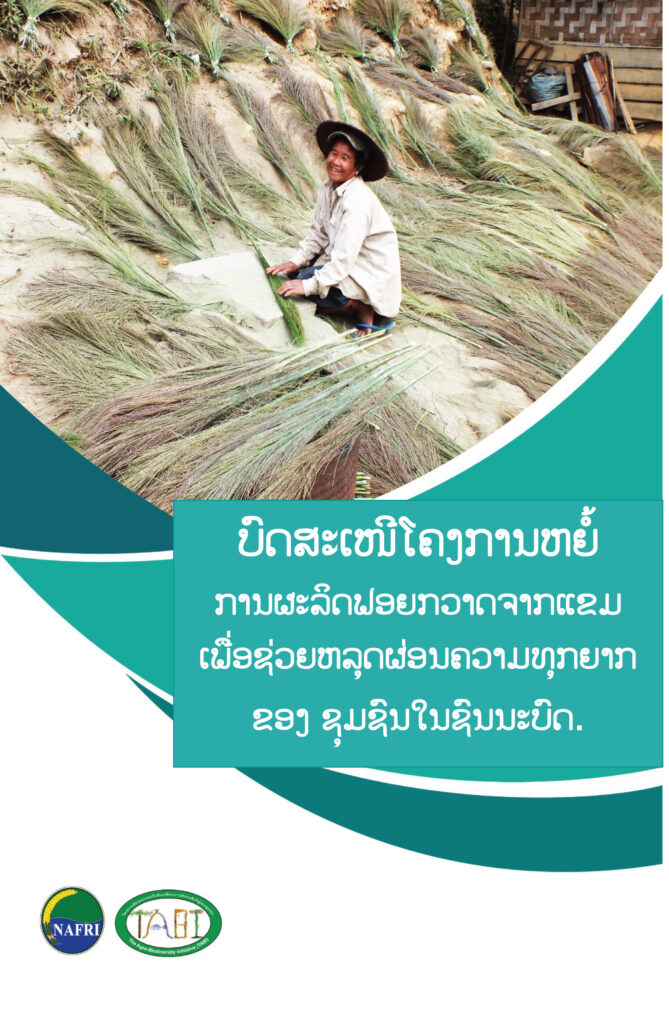Throughout the upland areas of Lao PDR, broom grass production is a source of income for many families and also a source of animal feed. Broom grass (Thysanolaena maxima), known as “Dok Khem”, is a naturally growing, semi-domesticated found in upland fallows land along roads. In addition to a cutting implement, it mainly requires labor for harvesting, drying and threshing the inflorescences, which are the plant parts eventually used to make a broom. The harvesting period approximately occurs for about four months between December and March but depending on regional conditions.
Broom grass is also cultivated as a cash crop by some villagers with minimal inputs. When cultivated, it is less time consuming than other field crops. Weeds need to be pulled out and then cut back once annually. In addition, harvesting from a field is easier than harvesting from the forest, mainly because of the increased density of plants in a planted field. Farmers can plant rooting stems in year 1 and harvest through year 3. Yield is estimated to be 4 ton/ha of dried and threshed inflorescences. If compared to the quantity of natural broom grass harvesting varied between 800 to 1,500 kg/ha.
After harvesting, the flowers of the broom grass are sun-dried for two to three days; the seeds are removed by manual threshing, and the grass stems are bundled for storage until it is time to sell them to traders with the price about 6,000 Kips/kg or making as brooms to sell with value-added up to 15,000 Kips/stick. Regarding quality criteria, long, full flowers are preferred, and they should be clean and not damaged.
For making broom products, the stems are bound together to form the stick handles, which may also sometimes be made from thin bamboo canes. It is estimated that 1 kilogram of flowering broom grass (dried and threshed) can produce 3 brooms, and one person can make twelve brooms per day at home; so, one producer only can make daily income about 180,000 Kips equivalents to 21 USD. There were also the broom products in small sizes that can be used to make paintbrushes and they can be stored and used for several months.
Agroforestry and Ecosystem Management, Market Access and Value-Added Agro-Products
Types:
Report, case study report
published in 2020, Lao language




